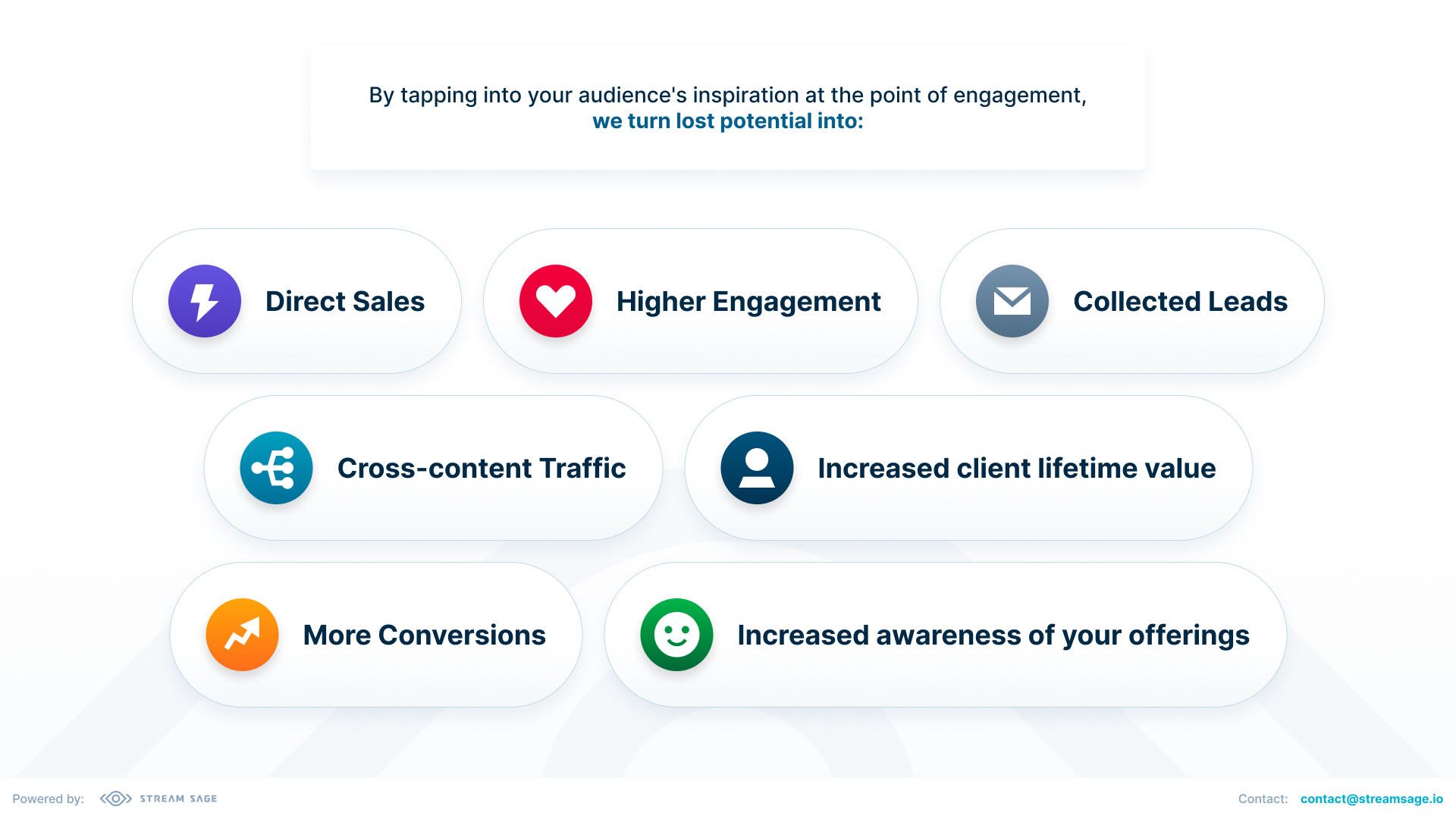So, you've got your first shoppable product and you want to know how well it's doing. You've seen the numbers go up and down, but what do they mean? Is your content more successful than other brands' shoppable content? And if so, why? In this guide, we'll look at the key elements that make a successful shoppable campaign.
Attracting and converting customers is the ultimate goal of your shoppable content.
The ultimate goal of your shoppable content is to attract and convert customers, who are then converted into repeat purchasers.
The first step in any successful marketing campaign is defining the problem you're trying to solve. Before you start working on a solution, ask yourself: What do I want my customer's experience with my brand or product to be? How can I make it better than their expectations?
Once you've figured out what success looks like for your business, it's time to set goals for how much traffic, conversions and revenue those improvements will generate over time. Don't worry about what other people's goals are - set your own! Be ambitious but stay realistic so that when things go wrong (and they will), there are plenty of smaller wins along the way that keep morale high as well as provide room for improvement later on down the line when necessary changes need making due course adjustments based off new information learned during testing phase(s).

The second most valuable outcome is the loyalty of existing customers.
The second most valuable outcome of shoppable content is the loyalty of existing customers. Loyal customers are more likely to buy from you again, recommend you to others and spend more money with you. They're also less likely to leave in the first place--which means that if they're not happy with your service or product, they'll tell their friends instead of just finding another provider who offers similar services at a lower price point (or maybe even free!).
The best way to measure this metric is by tracking return visits over time by tracking cookies across all devices used by each visitor.
Engagement is good for a number of reasons.
Engagement is a key metric for social media, and it's not just because you want to see your followers interacting with your content. Engagement is also good for SEO, customer retention and brand awareness.
Engagement can come in many forms, but the most important one is likes. When someone likes your content, it not only shows that they enjoyed what you published but also indicates that they’re interested in what you have to say. How do you get more likes on social media?
Create quality content. This is the most obvious way to get more likes on social media. What do you post? You want to create engaging, interesting and relevant content that your audience will love. You can do this by asking them what they want to see from you, or simply getting creative!

The value of engagement can be measured in many ways.
Measuring engagement is important because it shows you how much of an impact your shoppable content has had on your audience. The value of engagement can be measured in many ways, including time spent on site, shares, comments and clicks.
It's good practice to have a tracking tool in place so that you can see how many people are engaging with each piece of content as it goes live.
Measurements for engagements are specific to each type of content.
Measurements for engagements are specific to each type of content. For example, if you're creating a video, engagement can be measured by looking at the number of times people view your video and how long they watch it. If you're creating a blog post or infographic, engagement will be measured in terms of how many times people share the piece with their networks or comment on it.
Set goals and measure the effectiveness of shoppable content.
If you want to measure how effective your shoppable content is, identify what you're trying to achieve and then measure against that goal.
For example, if your goal is to drive traffic to your website and increase conversions, then you can measure those things. If the goal is more complex than that--for example, if it's also important for customers who see the product in an ad or on social media to be able to purchase it right away--then consider looking at click-through rates (CTRs) as well as conversion rate analytics.
Conclusion
We hope that this article has given you a better idea of how to measure the success of your shoppable content. If you're looking for more information on how to improve your retail business, check out our other blog posts here at Shopper Marketing!
If you have any questions about shoppable content or want some help getting started, feel free to reach out at support@streamsage.io. We can help you start a shoppable content experience within days!